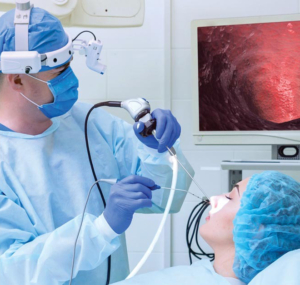OmniVision unveils new imaging subsystems for single-use endoscopes
OmniVision Technologies has unveiled it OVMed OCHSA and OCHTA cable modules for single-use endoscopes and catheters.
The fully-integrated medical-grade imaging subsystems combine an exceptionally small diameter camera module with upgraded OVMed cables and mini-LED illumination for a complete, fully medically-tested assembly that provides excellent image quality and reduces development cost and time-to-market.
“Previously, single-use endoscope and catheter designers incurred significant time and cost to separately source cables and LEDs, and then pair them with our wafer level modules,” said Ehsan Ayar, medical product marketing manager at OmniVision. “We are helping our customers shorten time to market with a complete, fully tested subsystem that can be integrated into single use endoscopes to allow doctors to see more detail and reach the body’s smallest anatomy.”
OVMed OCHSA with Digital MIPI Output The OCHSA cable module offers 800 x 800 pixel resolution with high-speed MIPI digital interface for larger outer diameter endoscopes, such as the bronchoscope, thoracoscope, pleuroscope, mediastinoscope, duoendoscope, and aminoscope. The cable module is designed to handle both short and long distances and can be customized as needed.
OVMed OCHTA with Analog Output The OCHTA cable module integrates OmniVision’s new OH0TA image sensor, which when compared with its Guinness World Record-holding predecessor, is even smaller and has quadruple the resolution. The OCHTA cable module provides wafer-level optics in a single compact assembly. With its particularly small size, the OCHTA cable module enables endoscopic devices to reach deeper into the body for a wide range of procedures including neuro, ophthalmic, ENT, cardiac, spinal, urology, gynaecology, and arthroscopy procedures.
The cable modules feature OmniVision’s CameraCubeChip wafer-level technology in a tiny 0.65mm x 0.65mm camera module, with 400 x 400 or 160 KPixel resolution for high quality image captures. They also feature the latest OVMed cables that are highly flexible and come in a thin micro-coaxial form factor.
Integrated mini-LED illumination The first-ever commercially-available integrated mini-LED illumination for single use endoscopy provides surgeons with precise brightness control, enabling them to clearly visualize anatomies that they couldn’t before. It features a higher contrast ratio within a smaller local area for extremely small package sizes, providing individual brightness and dimming control for multi-spectrum (RGB/ IR) devices in surgical procedures.


